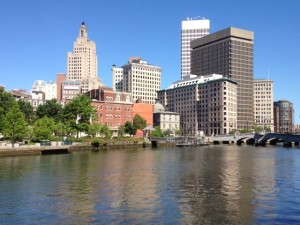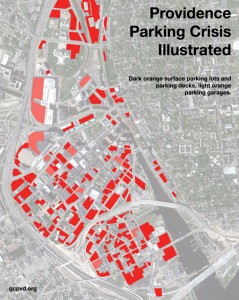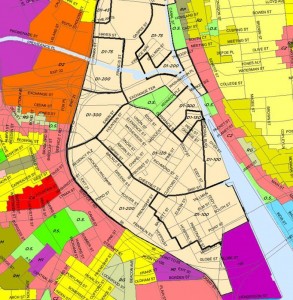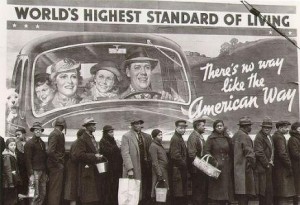Rhode Island’s economic engine needs a jump, to get us to the garage for a complete overhaul. In combustion engines, there are three must-have components, the engine itself, an alternator, and a battery. The battery starts the engine, then the alternator kicks in to fire the spark plugs and trickle charge the battery. VROOM!

A New Battery and Alternator
So, here we are at the garage with our barely functioning engine, and the mechanic says, “Well, you definitely need a new battery. This one hasn’t worked well in quite a while. I suggest you upgrade to a Revolving Commerce Fund for new and existing businesses.”
“O.K.,” we say, “what’s that going to run us?”
“Probably about $100 million, but this battery holds a 50 million volt charge for both new and existing businesses.”
“That seems pretty steep. Could we go for a different model?”
“Sure, but I don’t think you’ll get optimal performance out of them. The other bonus with this model is it acts as it’s own alternator. Loan Payments charge the battery.”
Engine Maintenance
The engine isn’t broken, per se, but maintenance is required. We could use an oil change.
“You, see,” says the mechanic, “Your engine is designed to be lubricated by manufacturing, but overseas markets have caused a crack in the oil pan, causing the textile and dye mills of yore to move overseas, and there’s little chance they’re coming back. You need a different grade of oil in the 21st century. If your engine is built for manufacturing, look to green tech, building, and energy.”
If we want our economy to work in the future, we have to a) make sure we have one, and b) prioritize what we’ll need in that future. Green sector jobs create swaths of jobs over the entire spectrum of skill sets.
Let’s say that Panasonic decides to open a solar panel plant here. Not only does the company need the designers and engineers to envision a product, they also need people to work on the production line, in the warehouse, make deliveries, and clean up the office.
Green design and building also employs people throughout the economic strata. One again, designers, architects and engineers have a place in this business, but so do the carpenters, welders, machinery operators, clerks, project managers, and dudes who lug stuff around the site.
Industries that have yet to be born in Rhode Island like waste conversion to energy are waiting for the state to step up and say ‘Yes’ to the future economy. Renewable energy companies are floundering in Rhode Island, waiting for the state to say ‘Yes’ to self-sustenance. The building trades are waiting for the state to say ‘Yes’ to being part of the solution.
Efficiency has to be the first step. Lowering electric bills puts more money in everyone’s pocket. Companies that have embraced efficiency are seeing significant benefits. Banneker, a logistics and supply company based in N. Smithfield, took on several efficiency initiatives, and lowered their operating cost by 60 percent. Not 60 percent off overhead, 60 percent off of the entire budget!
The mechanic also notices worn belts and hoses. He recommends some serious investments in public infrastructure and transit to fix what can be fixed, and nix what can be nixed.
A Note on Transmissions
The transmission in our R.I.-mobile is a healthy and thriving middle class. As long as the middle class has a few extra bucks in their collective pockets, they will spend it. A well maintained middle-class transmission is the only thing that will get this old jalopy moving forward.
As for Mattiello’s mantra, I think the next time I hear the words ‘jobs’, ‘economy’, ‘corporate tax’, and ‘estate tax’ in the same sentence, I will immediately picture him standing on the side of the road, smoke billowing from under the hood of his car as he tries to peer in, and not having the vaguest inkling of a clue what he’s looking at, or how to fix it.
]]>
Recently, it was reported that Providence has the 5th highest residential occupancy rate in the country. This is good and bad news.
The good news is that an occupancy rate of 96.3% represents strong residential demand for Providence (this was validated by the market study of the Superman Building conducted by 4Ward Planning). This is likely because not much has been getting built in Providence since the housing market collapsed in 2006 (notable exceptions are the Providence G and the Arcade micro-lofts; my understanding is that the demand for these units is immense, particularly for the micro-lofts because of their affordability). But the bad news is that a high occupancy rate increases rental prices and is indicative of an undersupply of residential rental units. Between 1980 and today, the city’s population has grown from 156,804 to 178,432, a growth rate of almost 14% (admittedly the population of Providence is still much lower than the high of over 250,000 during the 1930s-1940s).
From my perspective, though, the high occupancy rate is a huge opportunity for Providence and the state. Downtown/urban living is in high demand nationally, and Providence is no exception. Increasing residential density downtown, particularly by building on underutilized surface parking lots, would be a huge boon for the restaurants and retail shops that exist there and will create new vibrancy in an area of Providence that can sometimes seem a little bland. It would also be hugely beneficial for the city as more residential units = more property taxes. I say this BECAUSE residential demand is so strong. If it weren’t, there would be no reason to build.

Making downtown Providence a more affordable place to live for young and mid-career professionals who are accessing Boston’s labor market would be a smart investment. I personally live downtown and work in Boston and take the commuter rail for my morning commute (along with hundreds of others). By doing so, I bring in external money into the city and state’s economy (i.e., my wages are paid by a Boston firm, but most of my disposable income in spent in Providence and the rest of Rhode Island). Increasing the supply of residential rental units within walking distance of the Providence train station will generate revenue for the city (via property taxes) and the state (via sales and income taxes).
People smarter than me have suggested that the overall lack of building residential rental units downtown has to do with the high cost of construction (costs are roughly the same as in Boston or Hartford), the ridiculous parking requirements (1.5 spots per residential unit), the height restrictions (most of downtown is limited to 100 or 120 feet), and the relatively modest rents that can be charged for rental units compared to other rental markets (average rental rates for downtown Providence are about $1,300 compared to $2,000 in Boston).
The minimum parking requirement of 1.5 spots per unit is particularly onerous. If we want more walkable neighborhoods, and more cost effective construction, this ordinance needs to be significantly changed. High parking minimums make construction more expensive by having to build garage parking to accommodate automobiles, even for those people (like myself) who do not own a car. These parking garages take up a lot of space and don’t deliver all that much value (a 70 square foot parking space may generate about $100/month while 70 square feet of living space is much more valuable). Further, the excess area required to allow for drive-in and out is simply wasted space.

Similarly, most of downtown is restricted to about 100 or 120 feet maximum height (here’s a link to Providence’s zoning map). Depending on the ceiling height for the residential units, this limits construction to about 8 to 10 stories. If a developer is limited to 10 stories, and is required to put 1.5 spots for every unit, the economics for positive net return become very difficult. Closer to Rt. 95, a developer could build up to 200 feet high, and there is a small section of downtown that is zoned at 300 feet, but is occupied by the Convention Center, the Civic Center (or “the Dunk” as it is now affectionately known), the Omni Hotel, and the Residences. The surface lot across from the Hilton Hotel seems to be the only parcel that could be a prime parcel for a large tower, although its footprint is fairly small. Generally, the higher a developer can build, the more units that can be built, and the less space is taken up by parking, the more residential construction will happen. And an increase in rental housing supply brings down the cost of rental housing, as recently happened in Boston’s Seaport District.
As part of Providence zoning review, hopefully the parking mandate and the height restrictions will change (disappear). I personally like the Miami 21 zoning code that breaks through the rigidity of specifically designated land-use districts (like what Providence currently has) and adopts a form-based code that allows for organic changes in land use based on elements of walkability, the relationship between and among buildings and streets, and transitioning neighborhoods to accommodate growth and change based on what actually makes sense versus being restricted by a particular use that was set decades ago. Providence should really consider this.
Portland (of course) has been excellent when it comes to creating a bicycle friendly city, and it set another high bar for residential density when a 657-apartment project being developed in the Inner East neighborhood just outside of downtown Portland will have 1,200 parking spaces for bicycles rather than the almost 1,000 parking spaces that would be required in Providence. I imagine Providence doing something like this to minimize the wasteful impact of overly abundant car parking and making downtown living an attractive and AFFORDABLE option for all income levels.
But how does it get done? The city can be a partner by helping facilitate zoning variances to reduce the parking requirement and to build taller. To subsidize the cost and make the units affordable for low-income and average people to live there, the developer should access federal Historic Tax Credits and Low Income Housing Tax Credits. Building near the train station is ideal since access to Boston’s labor market is a huge incentive. More people living downtown means a more vibrant and commercially dynamic downtown.
]]> “Buy Local” is a catchphrase used ubiquitously throughout the country. Virtually every community has initiated their own buy local campaign. Here in Little Rhody, we have “Buy Local RI,” a little website set up by Lt. Governor Roberts that has since become irrelevant. There are other initiatives too, such as It’s All in Our Backyard, Buy with Heart, Union Bucks, and Small Business Saturday, that seek to direct spending to small and locally-owned businesses rather than “large box” retailers.
“Buy Local” is a catchphrase used ubiquitously throughout the country. Virtually every community has initiated their own buy local campaign. Here in Little Rhody, we have “Buy Local RI,” a little website set up by Lt. Governor Roberts that has since become irrelevant. There are other initiatives too, such as It’s All in Our Backyard, Buy with Heart, Union Bucks, and Small Business Saturday, that seek to direct spending to small and locally-owned businesses rather than “large box” retailers.
This all makes sense and I can appreciate the importance. Fundamentally, when local dollars are spent locally, they recirculate in the economy. Or to put it conversely, every dollar that is spent outside of the state is a net loss of overall wealth for Rhode Island. Similarly, every dollar spent at a national chain (even if local) suffers from leakage as our economic system peels off layers of surplus value to pay shareholders, CEOs, advertising, etc. that drains wealth from a community. You get the picture.
While I support the whole concept of buy local, it is really low impact and based more on the individual consumer’s purchasing decisions. “Should I get my tools and supplies at Mt. Pleasant Hardware, or should I go to Home Depot? Should I get my copy of Debtors’ Prison: The Politics of Austerity Versus Possibility at Symposium Books downtown, or should I just order it from Amazon?” Many people choose the latter in these scenarios. With limited take-up of “buy local,” the benefits remain small.
What can work much better is strategic sourcing from large local institutions. This can include universities, hospitals, large corporations (I’m looking at you CVS, Fidelity, and GTECH), and city and state governments. [Note: it’s important to remember that all this can be done without a local purchasing preference policy which Rhode Island policymakers rejected a few years ago at the request of large contractors due to the danger of reciprocity in other states.]
A lot of my work involves strategic sourcing and when done right the results are hugely beneficial for local, small, minority, and women owned businesses. And it benefits the state too as more purchasing done locally = more tax revenue. It’s not easy to do (nothing is), but if one looks at a hospital (or system like Lifespan), the amount of money they spend in any given year is huge, similarly for universities, for city governments, and for corporations.
The state can be a partner in the strategic sourcing process by helping identify local businesses that can serve as vendors for large institutions that currently buy large quantities of goods and services out of state or overseas. Imagine if the RIEDC RI Commerce Corporation convened a roundtable of all the executive leadership from each of the state’s hospitals, sought to understand their purchasing needs, identified mutual pain points, and proactively identified, recruited, and scaled local businesses to serve the needs of these institutions. Linking local suppliers to local buyers is a low cost way to boost the economy.
Sounds far-fetched, but I do this often at work. Recently, I assisted with Johns Hopkins University’s initiative to increase their local spend by 10% in Baltimore, developed a local sourcing plan for a Los Angeles Hospital, and analyzed the success of Source Detroit, a program to transfer a portion of the $1.6 billion dollars spent annually by Wayne State University, the Detroit Medical Center, and the Henry Ford Health System to locally owned businesses.
The process is basically to find out what an institution buys and then identify local businesses that can supply it instead. There are challenges, however. First and most importantly, you need commitment and buy-in from the senior executive leadership at the institutions. There are lots of good ideas out there and quick-win solutions that would boost the state’s economy, but without the commitment, nothing is going to happen.
Second, not everything can be sourced locally so you need to be selective. This is the fundamental difference between a generic buy local campaign and strategic sourcing. Identifying the high-spend categories that are available in the local market is important and will make the process flow smoother. Not everything is made here, and if it’s not made here, it can’t be purchased here. Luckily though, Rhode Island still makes a lot of stuff.
Third, you have to overcome the existing practices of the purchasing managers. Relationships take time to build, and switching to a new vendor can involve some risks. These risks can be partially alleviated by starting slow and by identifying quality local supplies used by other institutions. There is a process that works to change the purchasing habits and long-standing relationships, but it takes time.
Fourth, sometimes local suppliers don’t have the cheapest per product cost. When businesses operate with a shortsighted focus on low prices, local suppliers lose even though they may still have the lowest overall cost. There are many hard and soft procurement costs that are often ignored such as transportation fees, legal fees, late deliveries, damaged product, etc. that would not accrue from local vendors.
Finally, many small businesses need help building their capacity to be able to handle the procurement needs of a large institution. Here is another role for the state and partners to play to ensure that the local businesses can effectively provide the goods and services needed by large institutions. Small business support organizations like the Small Business Development Center and SCORE can offer the training and resources needed.
Why is strategic sourcing important for the state? There are three key reasons.
- It benefits the local community. When institutions source locally, local revenues increase, resulting in higher tax revenue for the state, and the increased demand may lead to the creation of new jobs. By identifying minority and women-owned firms, or firms located in low-income areas of the state, strategic sourcing can have profound positive impact for some of the most economically marginalized folks among us.
- It benefits the institution. Local goods and services can reduce delivery times, allow for lower overhead costs (you don’t need to store as much when the supplier is 15 minutes away), and reduce potential disruptions in the supply chain.
- It strengthens the entire business community. By shifting spend to local vendors, large institutions improve the local business ecosystem and generate a more robust and competitive network of suppliers. Having local suppliers also means interactions are easier and quicker, and the partnerships can develop new ways to identify and rectify supply chain problems, create new products and processes, and add innovation to the whole system. Also, by shifting to local purchasing, local vendors become more adept, more responsive, and more stable over the long-term.
If I was a Mayor or Governor, I would create a position in my administration specifically tasked with building and supporting these relationships. There is a net benefit to the state with the minimal cost of an FTE position in the budget. The benefit to a city is less, although new business expansion would provide additional property tax revenue. To do it right, you need someone competent who can facilitate these connections, hold conferences and convenings, and identify the local businesses that can act as vendors.
Alternatively, this could be done outside of government by any trusted third-party (i.e. RI Foundation, Chamber of Commerce, RI Black Business Association, etc.).
This is the 2nd in my ongoing economic development series called “Rebuilding Rhode Island’s Economy.”
]]> I am of the mind that the biggest issue facing the state right now is the sluggish economy. I know many share this belief. With that in mind, I will be focusing my (unfortunately limited) time writing specifically on creative strategies to improve Providence’s and the state’s economy, and thinking about it from the perspective of the upcoming gubernatorial and Providence Mayoral campaigns (i.e., what do the candidates have to say about what I write?). Before I delve into specific suggestions, I believe there are a few items relevant to economic growth that need to be clarified at the outset.
I am of the mind that the biggest issue facing the state right now is the sluggish economy. I know many share this belief. With that in mind, I will be focusing my (unfortunately limited) time writing specifically on creative strategies to improve Providence’s and the state’s economy, and thinking about it from the perspective of the upcoming gubernatorial and Providence Mayoral campaigns (i.e., what do the candidates have to say about what I write?). Before I delve into specific suggestions, I believe there are a few items relevant to economic growth that need to be clarified at the outset.
First, there isn’t much the government can do to improve the economy directly, particularly in this climate of economic distress and innovation paralysis. When the economy is running smoothly, most folks want the government to “stay out of the way.” But when the economy tanks, policymakers are the first to be blamed (this is a disingenuous and undeserved complaint), and everyone wants them to “fix it.” First, you can’t have it both ways people. Second, there is no magic solution to “fixing” the economy.
Second, economic growth takes time, commitment, alignment on a vision, and the autonomy to make things happen. It is unlikely to see radically positive results in a few months or even a couple years. Economic development is a decades-long strategy, that often requires partnerships and long-term planning that are challenging for public officials, policymakers, and civil service staff. While the pain of recessions, joblessness, and foreclosures is real, there are often few options for state and local officials to ease that pain.
Third, everything matters to economic development: education, transportation, infrastructure, workforce, land-use, zoning, existing markets, history, taxes, regulations, natural assets, etc. But each of these matter to varying degrees depending on the industrial sector and individual businesses. To assume that “lowering taxes” or “reducing regulations” is the most important of considerations is foolish, ill-advised, offensive, and immeasurably distracting from the various other issues that are generally much more important for long-term economic success. While everything is important, some things are more important than others.
 Fourth, every strategy comes with trade-offs and there are always winners and losers with any policy change. Typically, those with wealth and power can influence policy to their benefit. And while this may benefit them personally, or as a group, there are long-term consequences for the economy that are generally ignored. The incremental policy decisions that have been made in the past have led to our little state to lack the sufficient resiliency to bounce back from the recent and ongoing depression/recession. The economic conditions in which Rhode Island finds itself will take many, many years to rectify.
Fourth, every strategy comes with trade-offs and there are always winners and losers with any policy change. Typically, those with wealth and power can influence policy to their benefit. And while this may benefit them personally, or as a group, there are long-term consequences for the economy that are generally ignored. The incremental policy decisions that have been made in the past have led to our little state to lack the sufficient resiliency to bounce back from the recent and ongoing depression/recession. The economic conditions in which Rhode Island finds itself will take many, many years to rectify.
Fifth, demand for goods and services drives the supply of goods and services. If no one wants to buy stuff, stuff doesn’t get made, and people lose their jobs. Most tools that are deployed by cities and towns and the state try to stimulate the economy do not address economic demand, and as such they are largely inefficient and/or ineffective.
Sixth, underlying everything is an often ignored but crucial criterion: the importance of inclusive and dispersed economic growth. The benefits of economic growth need to be broadly shared because the more people who earn money, and the more money that they earn, the higher the level of economic growth. When economic growth benefits a small (and shrinking) number of people, aggregate demand declines and the economy suffers. When a rising tide actually lifts all boats, something that the post-WWII economy was notable for, everyone benefits. When a growing number of boats are chained to the bottom of the ocean, as has been the experience from the mid-1970s onward (with a notable exception during the 1990s), the economy flounders, people fall deeper in debt to maintain their standard of living, and the economy slows.

Seventh, the ONLY way the state (or any state, region, city, etc.) can be successful in the long-run is by improving its competitiveness in particular economic areas. This can be done by increasing the productivity of existing businesses through innovation or better trained employees or achieving higher workforce participation rates, while ALSO supporting the high and rising wages and living standards of Rhode Islanders. Period. This is hard to do, but not impossible. The role the city and state can play is to lay the groundwork for an iterative process of successive improvements to support business productivity gains and assist with the dispersion of economic benefits.
Eighth, when we discuss economic development, it’s important to differentiate between locally-traded clusters, sectors, and industries and those that are subject to larger markets, regional, national, or global in scope. The first group includes restaurants, local health services, residential housing construction, etc. while the second group includes software development, manufacturing, higher education, etc. The success of the first group is largely dependent upon the success of the latter. To put it another way, an economy can only grow by exporting lots of high-value goods and services and bringing in money to the state from other parts of the country / world. The degree to which the economy is exposed to and successfully competes in global markets is the single largest factor that explains how successful its local economy is. This isn’t to say that the local economy isn’t important, just that everyone selling hamburgers to each other does not grow the economy.
Finally, businesses grow at various points over their lifecycle. The only businesses that are guaranteed to have net positive job growth are new businesses, for the obvious reason that they will employ at minimum the owner of the business and they have no current employees to let go. Many businesses grow to a certain size and stay there for their entire existence. Many businesses have dramatic fluctuations in their employment based on seasonal or market demand. Some businesses have limited but sustained growth. And only a few businesses experience pronounced growth, and that growth is generally limited to a short period of time. All of this is important when it comes to growing jobs because there are only limited opportunities to identify and support existing businesses during their growth phases. But the opportunities are innumerable to support new business growth, and it is new business startups that have been responsible for net new job growth in the past decade.
There are additional factors that contribute or impede economic growth, but in my mind, the 9 above are of paramount importance. Feel free to bookmark this post as I will update it as I begin listing specific strategies to Rebuild Rhode Island!
]]>